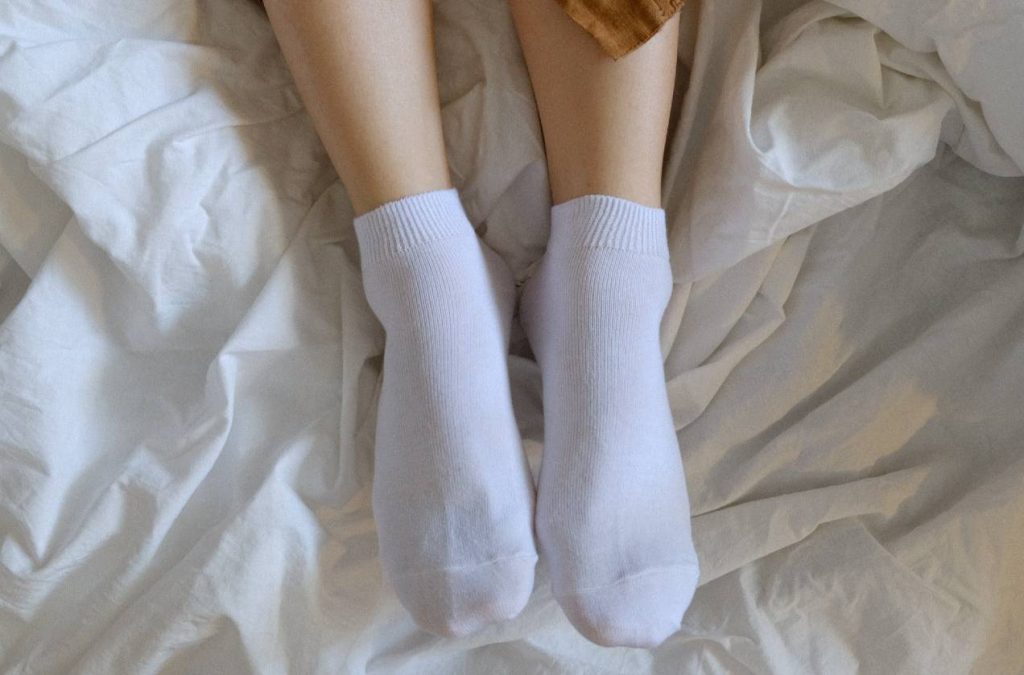Many seniors instinctively remove their shoes and socks once they get home, believing it helps them relax. However, experts emphasize that keeping socks on indoors is not only comfortable but also a simple and effective safety measure. As people age, circulation, balance, and skin sensitivity change, making this small habit surprisingly important for maintaining health and mobility.
Promoting Warmth and Circulation
Warm feet help maintain overall body comfort, especially for older adults who may experience reduced circulation. When the feet get cold, muscles tend to tighten, leading to stiffness and discomfort throughout the body. Wearing socks helps regulate temperature and encourages blood flow to the extremities. This warmth contributes to better movement, reduces cramps, and promotes relaxation, particularly during colder months or in homes with tile or hardwood floors.

Reducing the Risk of Slips and Falls
Falls are one of the most common hazards for seniors, often leading to serious injuries. Walking barefoot on smooth or polished surfaces can increase the risk of slipping, especially when floors are slightly damp or freshly cleaned. Wearing socks with a textured or anti-slip grip provides stability and reduces that risk. This simple layer underfoot helps prevent sudden slips and offers extra confidence when moving from room to room.
Protecting the Skin and Feet
As the skin naturally becomes thinner and more fragile with age, it becomes more prone to minor cuts, blisters, and infections. Socks provide an essential barrier, protecting against friction, dirt, and sharp objects that might be on the floor. They also help absorb moisture, keeping the feet dry and reducing the chance of fungal infections or cracked heels. For seniors with conditions such as diabetes, this protection is particularly vital since foot injuries can take longer to heal and may lead to complications if unnoticed.
A Simple Form of Self-Care
Keeping socks on indoors is more than just a comfort habit—it’s a form of preventive self-care. Seniors often focus on big health routines like exercise or diet, but it’s the small, consistent actions that build overall well-being. Just as grab bars and comfortable seating improve safety, socks play a quiet but crucial role in daily stability and comfort. They serve as a constant reminder that caring for one’s feet is caring for one’s independence.

Choosing the Right Socks
The type of sock matters. Seniors are advised to choose breathable, non-restrictive materials like cotton or soft blends that fit comfortably without cutting circulation. For added safety, non-slip socks with rubberized grips on the soles are ideal, especially on hardwood or tile floors. Avoiding overly tight elastic bands also prevents poor circulation and discomfort. Changing socks regularly keeps feet clean and dry, promoting hygiene and overall foot health.
Small Habits, Big Difference
Though it may seem insignificant, keeping socks on while relaxing at home can significantly improve safety and comfort for older adults. It warms the body, supports circulation, protects delicate skin, and helps prevent falls—all while fostering awareness of personal safety. This simple daily choice can make a meaningful difference in how comfortably and confidently seniors move through their homes. In the end, wearing socks indoors isn’t just about staying warm—it’s about protecting health, preventing injury, and preserving independence. Sometimes, the smallest habits are the ones that quietly make life safer and better.

















